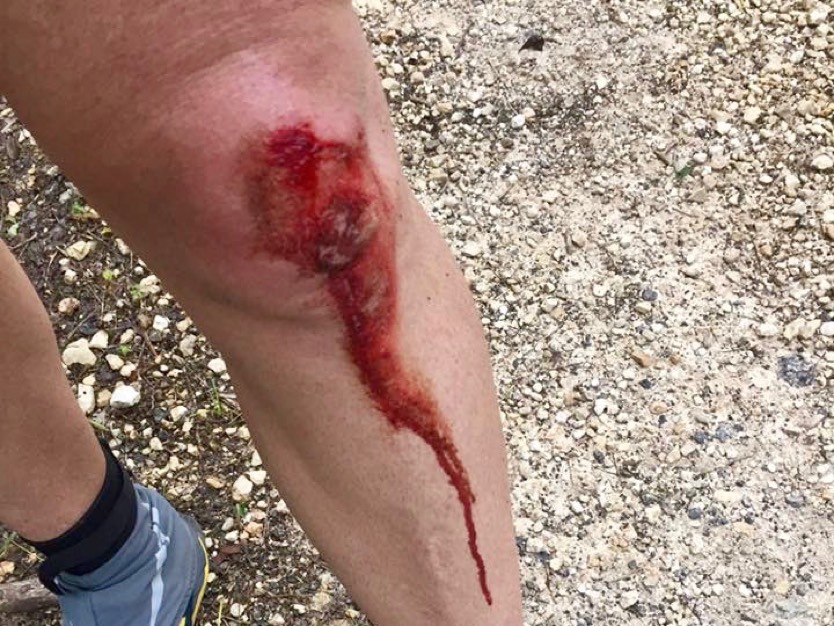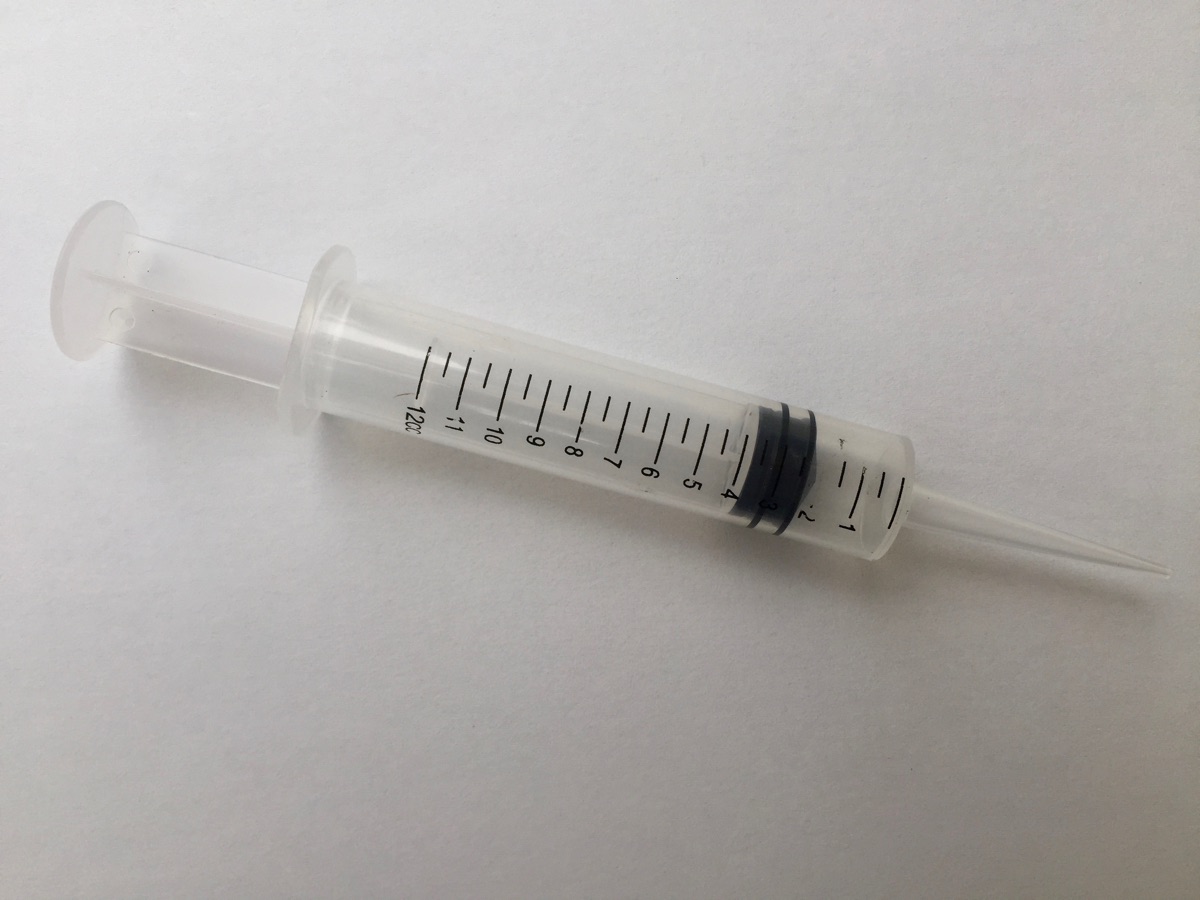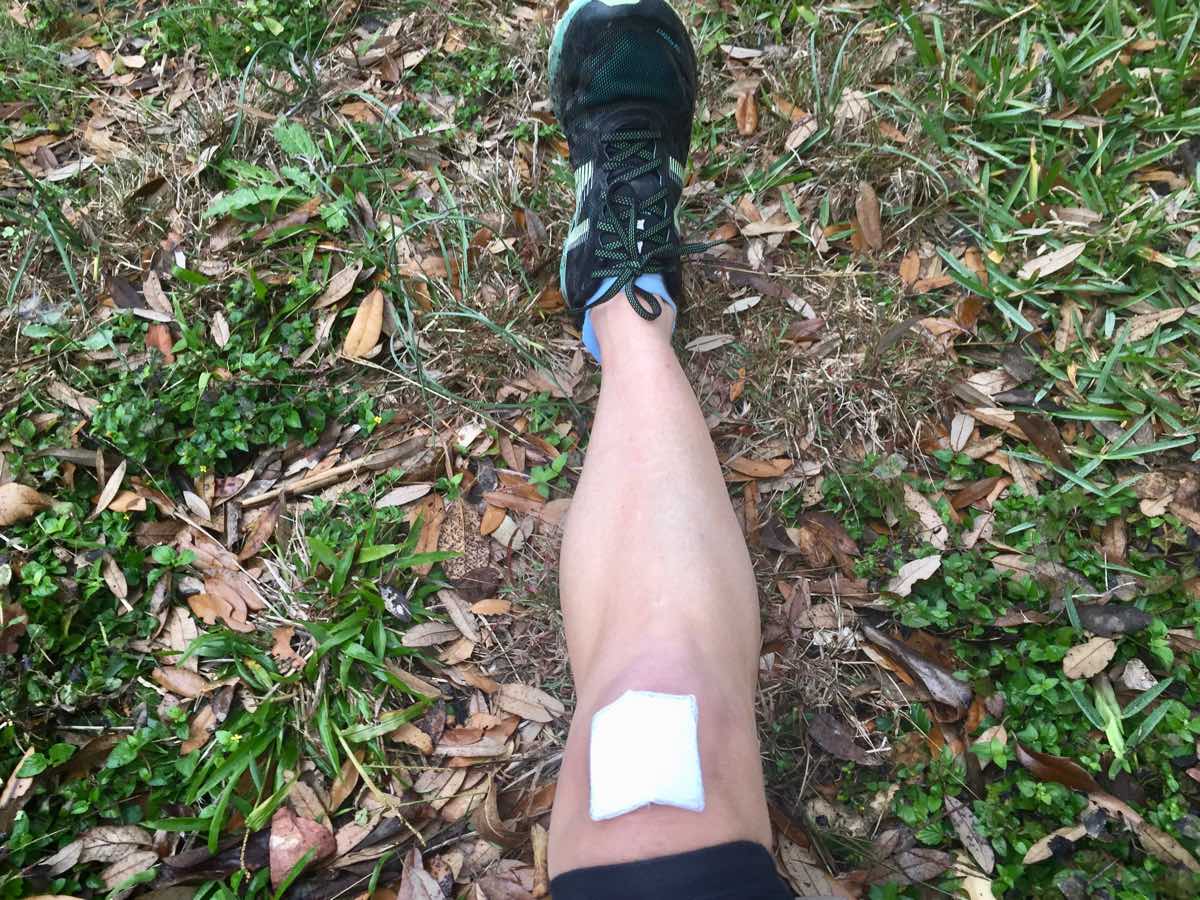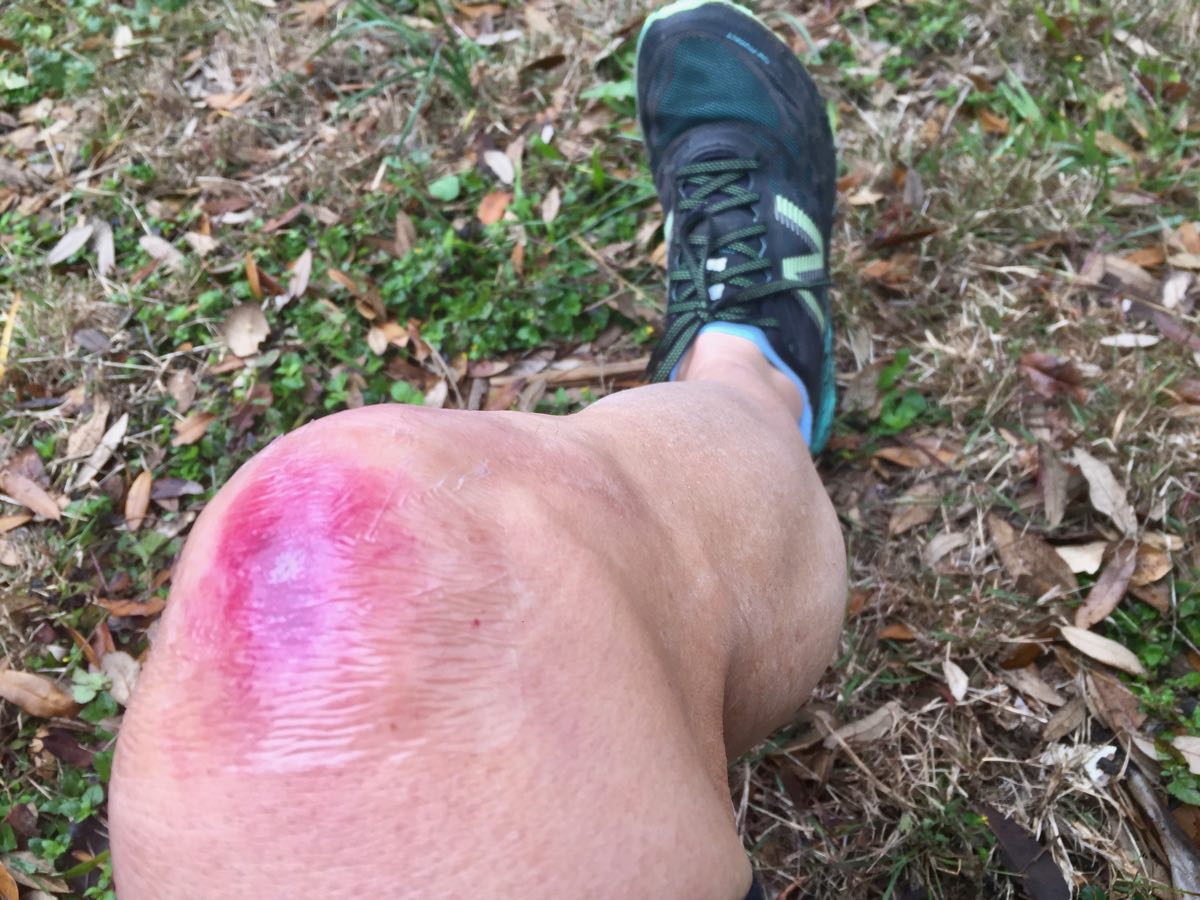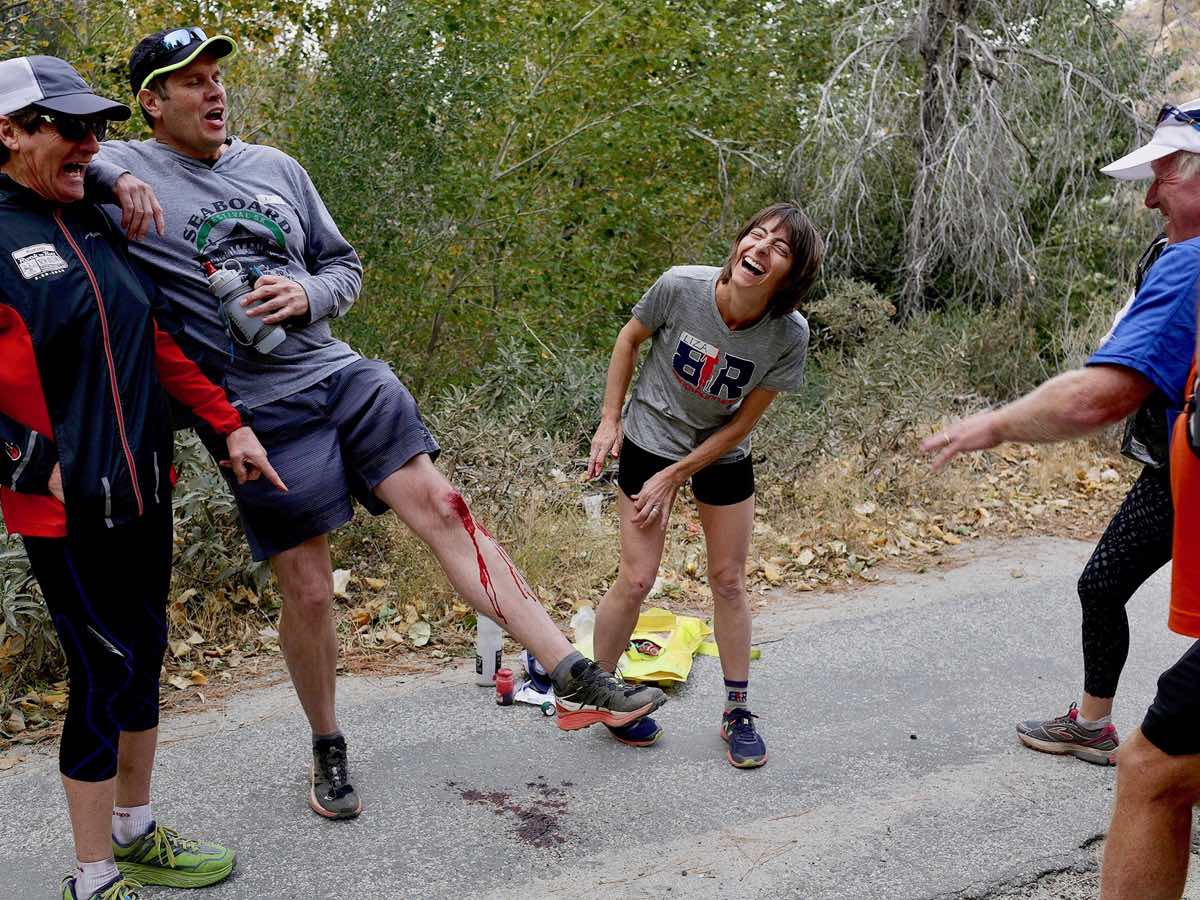Scenario 1:
You’re volunteering at an aid station at the Rocky Raccoon 100 Mile in south Texas when a runner’s crew yells: “We need medical! Medical! We need some help here!”
Neither you nor anyone else at this aid station has medical training. You’d meant to sign up for that Wilderness First Aid course last weekend, but you went on a long run instead. All the other volunteers are busy, so you pick up the first-aid kit and head over to the injured runner hoping it’s nothing serious.
“What’s up?” you ask.
“He fell and cut his knee!” his crew tells you.
You look at the knee. It looks like most of the other bloody knees that have come through the aid station today.
“How can I help?” you ask the runner.
He tells you he wants you to clean and bandage his knee. You tell him he might just go ahead and wait until the end of the race to deal with it. But he’s adamant. He doesn’t want to spend the next 10 miles with blood dripping into his running socks. Fair enough.
Question: What’s the best way to clean this wound and prevent infection?
A. Put gloves on and scrub the wound with soap and drinkable water.
B. Use a stream of drinkable water from a water bottle to clean it.
C. Use a stream of drinkable water from a pressure irrigation syringe to clean it.
D. Pour hydrogen peroxide over the wound, then flush it with drinkable water.
Answer: C. Use water from a pressure irrigation syringe to clean it.
For effective wound cleaning, pressure irrigation syringes are worth their weight in gold. They blast dirt and germs out of wounds. Water squirted from a water bottle or water-bladder tube can’t compare to the water pressure from an irrigation syringe. But, of course, flushing a wound with clean water by any means is better than nothing.
This video shows how much more water pressure a pressure irrigation syringe can clean with compared to a water bottle:
Somebody’s water bottle is also a lot less clean than an irrigation syringe. These syringes cost about a dollar, and they’re small and light. They should be in every trail runner’s first-aid kit. Scrubbing with soap is less effective than using pressurized water, and both soap and hydrogen peroxide damage healthy tissue and slow healing. (Yes, your mother may have used hydrogen peroxide on every cut you ever had. The truth is they don’t update the mom school curriculum all that often. You also shouldn’t tilt your head back when you have a bloody nose. Your mom just told you to do that because she didn’t want blood on her carpet.)
Irrigate the runner’s knee with until it looks nice and clean. Keep the syringe tip close to the wound.
The pressure will be a bit uncomfortable for the patient. If it’s not, you’re not doing a good job and the chance of infection later is higher. A good rule of thumb is to use half a liter of water to clean the wound.
After the wound is clean, you can cover it with a piece of gauze.
But how are you going to get the gauze to stay put? This runner has another 10 miles to go before he finishes.
Allow me to introduce you to the magic of self-adherent wrap! Brand name: Coban.
Coban is similar to a fabric elastic bandage, like an ACE wrap, but it’s infinitely better because it sticks to itself. Coban will stay put when you’re running and doesn’t require pins, clips, or knots. And, magically, Coban doesn’t stick to anything besides itself. It doesn’t stick to your skin, your wound, or your clothes. So it doesn’t impede your movement like tape or an ACE wrap on your knee might. It’s also water and sweat resistant! You can find Coban at most any drug store and most supermarkets’ first-aid sections.
The scenario continues:
The runner finishes the race with his knee and knee bandage intact. His crew thinks he’s amazing and lavishes praise on him. At the hotel that night, he removes the bandage from his knee to take a shower. He washes the intact skin around the wound with soap and water, avoiding the wound itself.
Question: Should he keep the bandage off overnight to let the wound air out?
A. Yes.
B. No.
Answer: B. No. I know, I know; your mom told you otherwise. Mine did too. But the reality is that the wound will heal more quickly and it’ll be less likely to scar if you keep it moist.
The runner should put some antibiotic ointment on the cut, cover it up, and go to bed. The antibiotic ointment will do a nice job of keeping it moist.
Or, he can cover it with a transparent film dressing instead. These films are like medical GORE-TEX. They’re waterproof but breathable. You put them right over the wound without any antibiotic ointment. The film keeps the wound moist. These film dressings can stay on while the wound heals as long as the wound doesn’t look infected and there’s no accumulation of pus. Sweaty runners will usually have to change them after each run though.
Scenario 2:
Your running buddy texts you this picture of her knee two days after a fall.
“Do you think it’s infected?” she asks.
Question: Well, is it infected?
A. Yes!
B. No.
Answer: A. Yes! This is a lovely mild infection. There’s the classic redness and a bit of swelling, along with some laudable pus. Your friend also tells you the skin around the cut feels warm and it’s a bit tender to the touch.
Question: What should your friend do?
A. Put gloves on and scrub the wound with soap and water.
B. Use a stream of water from a water bottle to clean it.
C. Use a stream of water from a pressure irrigation syringe to clean it.
D. Pour hydrogen peroxide over the wound, then flush it with water.
Answer: C. Use water from a pressure irrigation syringe to clean it.
I hope you got that right! The treatment for a mild infection is simply to re-clean the wound. Soak the wound in hot water for 20 minutes or put a hot compress over it before you clean it. That will soften any crusted pus or blood, increase blood flow to the wound, and increase drainage of deeper wounds. She should clean it and use hot soaks twice daily until it no longer looks infected.
If there’s no improvement in 12 to 24 hours, it’d be best for her to get the infection checked out by a medical professional. And certainly if she developed systemic symptoms like a fever, swollen lymph nodes, or red streaking away from the cut, she should get herself to a clinic to be evaluated. Mild infections can progress to serious, life-threatening infections quickly without appropriate interventions.
[Author’s Note: Learn more about caring for wounds, preventing infection, and other wilderness first-aid skills with a two-day NOLS course. Thank you to Tod Schimelpfenig, NOLS Wilderness Medicine’s Curriculum Director and author of NOLS Wilderness Medicine, for his guidance and oversight of this series. Thanks also to graphic artist Brendan Leonard, the trail and ultrarunner of Semi-Rad fame, for his graphics collaboration in this article series.]
Call for Comments
- Please share your best or most ridiculous trail running wound story!
- And, in that story, what did you do to treat your wound?

Image: Semi-Rad/Brendan Leonard
